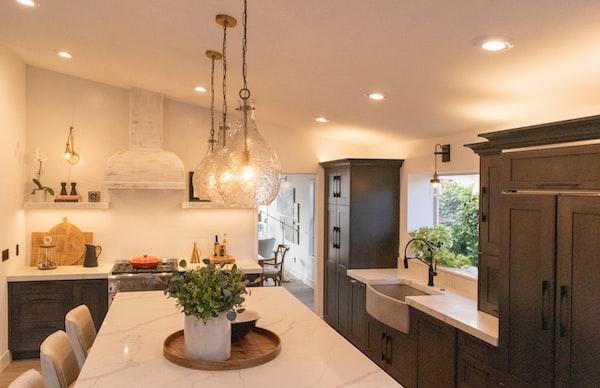A well-lit room not only offers a sense of warmth and comfort but also has the power to influence the ambiance and mood of the space. To achieve a balanced lighting plan, consider incorporating three layers of light – ambient, task, and accent. Ambient lighting refers to the general, overall illumination of a room. It can be achieved through the use of ceiling-mounted fixtures, recessed lighting, or even natural sunlight during the day. Task lighting focuses on specific areas where activities such as reading or cooking take place and includes under-cabinet lighting and desk lamps.
Accent lighting is designed to add visual interest, draw attention to architectural features, or highlight artwork and other decorative objects. Examples of accent lighting include track lights, uplights, and wall sconce lighting. When planning your lighting, pay attention to the color temperature and brightness of the bulbs you choose, as these can significantly impact the atmosphere of the room. Opt for warm, dimmable bulbs in living areas and bedrooms and brighter, cooler bulbs in workspaces and kitchens.
Don’t forget to utilize natural light, which can make a space feel more open, airy, and welcoming. Arrange furniture to maximize natural light exposure, and consider the use of sheer window treatments or light-filtering shades to allow sunlight in while maintaining privacy.
Choose the Right Textiles and Patterns
Textiles and patterns can instantly add life and personality to your home, but with all the options available, it can be overwhelming to know where to start. The key is to choose a color palette that complements the overall design of your space and to select textiles that vary in texture, scale, and pattern to create visual interest. Start by picking a few core colors for your palette, and choose fabrics and patterns that incorporate these hues.
When mixing and matching patterns, aim for a balanced look by combining bold, large-scale prints with smaller, more subtle designs. And don’t shy away from layering textures – a combination of soft, plush fabrics with woven or natural materials can create a rich and dynamic aesthetic. Remember to account for practical considerations when selecting textiles. For example, performance fabrics designed for outdoor use are an excellent choice for high-traffic areas or households with children and pets.
Accessorize with Intention
Accessories are the finishing touch that can bring your entire decorating scheme together. Begin by assessing your space and determining what areas need additional visual interest or grounding. Consider the size and scale of your room and the furniture within it when selecting accessories. Smaller spaces may benefit from more delicate, streamlined items, while larger rooms can handle bolder, more substantial pieces.
When choosing decorative objects, focus on pieces that have personal meaning or help tell the story of your home rather than simply filling a void. Avoid the urge to over-accessorize, as too many items can clutter your space and detract from its overall design. Instead, opt for a curated collection of art, framed photos, vases, and other items that complement your design theme and add a touch of personality to your home.
Lastly, don’t forget to incorporate greenery into your décor. Houseplants come with several health benefits and can breathe life into your space and provide a pop of natural color and texture.
Focus on Functionality
While aesthetics are undeniably important, the most successful home designs are those that prioritize functionality. Start by assessing the needs of your household and how you want your space to function. Identify areas where better organization or storage solutions could improve daily life and consider furniture pieces with a dual purpose or built-in storage capabilities, like an ottoman with hidden storage or a bed with drawers underneath.
In addition to considering space usage and organization, keep in mind your lifestyle and the activities you wish to accommodate in your home. For example, for families with children, durable, easily-cleaned upholstery fabric and ample seating options should be prioritized.
Creating a well-designed, comfortable living space is achievable when you focus on balancing lighting, choosing the right textiles and patterns, accessorizing with intention, and prioritizing functionality. With these tips and some thoughtful planning, your home can be a true reflection of your personality.










